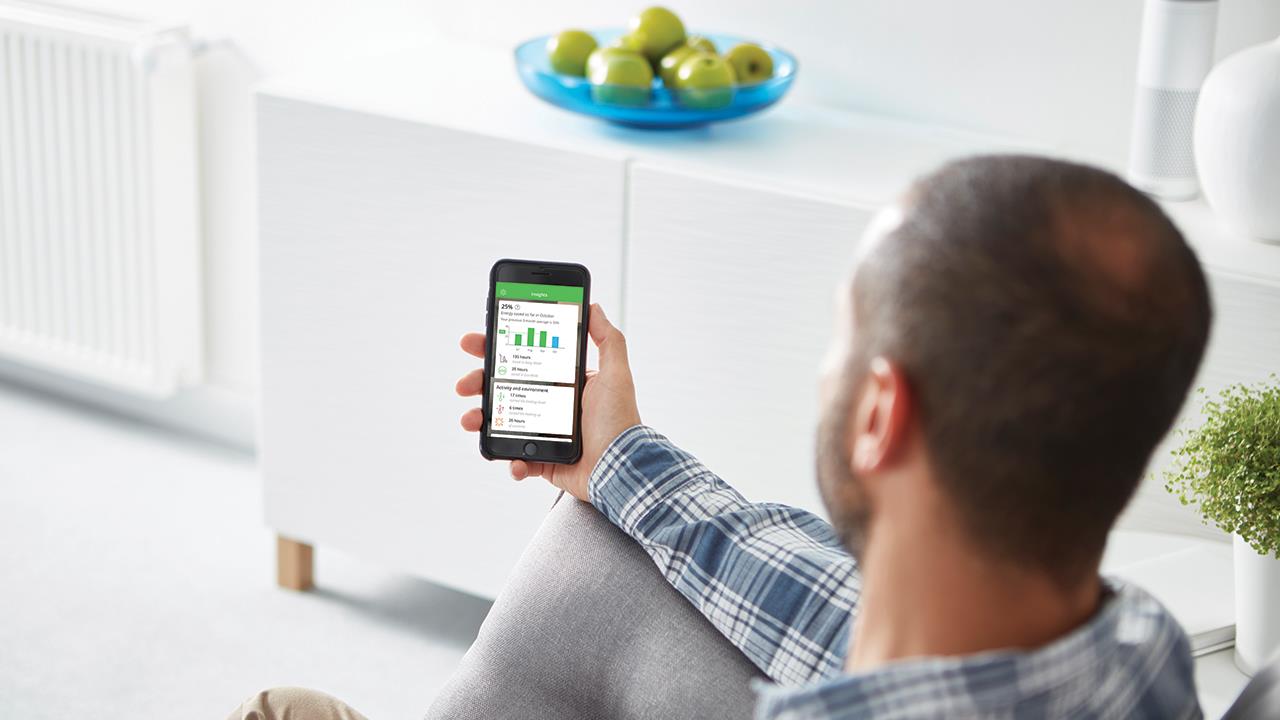

With energy prices having risen significantly over the past 12 months, and some uncertainty remaining for the future in this department, stretched homeowners are looking for ways to take back control of their energy use, with heating being at the top of the agenda.
As such, many installers find themselves being asked by their customers to suggest energy-reducing measures.
Among those, smart heating controls are well suited to a variety of homeowners; from the tech-savvy through to multi-generational households. The option they provide of controlling a heating system via an app on a smartphone, in addition to manually adjusting temperature on room thermostats, means that heating schedules can be adjusted from anywhere at any time.
Many smart controls on the market are also designed with intuitive technology that will help to optimise the performance of a home’s heating.
For example, Wiser includes an Away Mode, which acts as a quick and easy way to turn a whole heating system off with just the tap of a button, and an Eco Mode, which combines optimum stop and weather compensation to learn about the thermal properties of the house.
This then allows Wiser to know when to turn off the heating early to save energy, while still delivering the desired room temperature and comfort levels.
Typically, using smart modes can help homeowners reduce their energy usage by an average of 16%, which is a significant saving to be made in today’s economic climate.
While installers can explain the benefits of upgrading a heating control and features like these to their customers, the most important thing is being able to demonstrate they work.
One of the best ways that a consumer can see the benefits of this energy saving technology is through the data and insights provided by their smart heating control system.
Some smart controls, such as Wiser, for example, provide insights that help users build an understanding of how they can save on energy.
Meanwhile, a heat report is a useful tool that can help homeowners determine if their heating system is working in the right way. Tracking internal and external temperatures and setpoints via the report enables the user to assess what changes could be made to heating schedules to conserve energy.
To take this one step further, some smart controls on the market, again such as Wiser, can be linked to a smart meter, for an even better understanding of the home’s energy use.
For example, when Wiser is connected to the smart meter, homeowners can access Insights+, where they can view their current usage for electricity and gas, as well as tariff and spending data in monetary values, which reflects their energy bills.
In addition to this, Wiser’s Insights+ offers help on energy budgeting with push notifications. A behavioural analysis, with trend data, calculates the carbon footprint of the home, and makes predictions about future heat use and spend.
These are all important features that enable homeowners to make informed decisions about how they use their heating or whether they can make any further enhancements to the system, such as upgrading to multi-zoning.
This type of connectivity and overview of their heating can help homeowners save an estimated additional 7% on their energy bills.
With the affordability of energy bills front of mind for many, it is essential that heating engineers are able to support their customers with the right tools and advice.
That way they can allow them to learn more about how smart systems can reduce their monthly outgoings, and the many features that can be used to gain a better understanding of how their heating can be used in the most efficient way.
If you'd like to keep up-to-date with the latest developments in the heating and plumbing industry, why not subscribe to our weekly newsletters? Just click the button below and you can ensure all the latest industry news and new product information lands in your inbox every week.